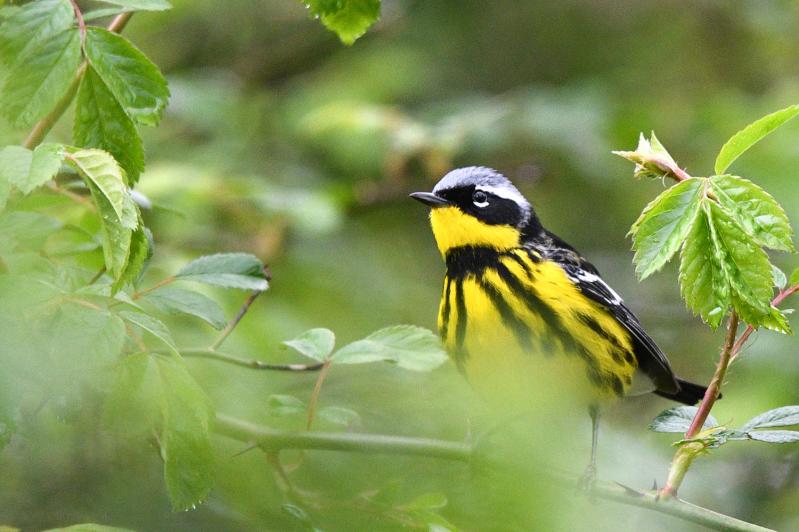Over the next two weeks, spring bird migration will peak. Hundreds of millions of birds will fly up the country, largely south to north, in sync with blooming trees, flowers, and insect hatches. Many are attempting to reach the green attic of North America, the boreal forest of Canada, where they will breed and raise their young before reversing course in the autumn.
It’s not easy to really know what this means. It’s happening, somewhere. Above maybe? Our clocks are full, our notifications pushed, we are alert, but to what? Amidst the omnishambles of life in 2022, school drop-offs, jobs, news static, Ukraine, Covid, screens, spring arrived, or at the very least, winter departed.
Each spring, for weeks while we sleep, the birds pass overhead. We get hints that something is changing. The cardinals start singing in the dark, well before the sun rises. Later in the day, the robins sing us into the evening. Sometimes, migrants use our backyards to stop off for a day or two and prepare for the next leg of their journey. If you want to think of migration as a marathon for the birds, think of yourself as that person handing them a paper cup of water as they pass by. Make sure your bird bath is full, keep the cats indoors, put up those Zen wind curtains (Google it), and turn off your up-lit trees.
Many of these birds are different from your usual cast of backyard birds. Perhaps a rose-breasted grosbeak or scarlet tanager will visit your feeder. Maybe you’ll be surprised by an oriole or a black-throated blue warbler.
Think of them as droplets that splash down from the invisible nocturnal stream of birds between your roof and the stars.
This is an event that should be celebrated.
To do so in an extra modern way, check out birdcast.info, a website that tracks bird migration through radar. For example, it notes that just Monday night, approximately 21,400 birds passed over Suffolk County. Last night, it predicted 347 million birds would take flight across the United States.
Over the next week, expect to see the arrival of more warblers. Yellow warblers, Northern parulas, blue-winged warblers, black-and-white warblers, ovenbirds, and prairie warblers, will all pass over your house. Eastern kingbirds and great-crested flycatchers will arrive just in time for the aerial insects, and then the wood thrushes and veeries will fill the air with something else entirely: song.
I’m old school, and I like to witness migration by walking around and looking up. A hike through Montauk last weekend yielded hundreds of Eastern towhees singing “Drink your tea!” and many species of warblers. During migration I’m a bit reckless. I drive distracted by birds flashing past my windshield. I stumble about the trails, looking up, tripping over tree roots, my foot sinking into mud puddles, as I search for migrants. Admittedly, I tend to search out the species I don’t usually see. I want to see more than I did the year before. The longer I do this, however, the more it seems to be a weakness.
My real goal during migration is to be swept up. In my best moments, everything drops away and I’m not focused on categorizing and identifying each bird. I’m seeing and appreciating the fullness of the moment. It’s not that I won’t be out there trying to pick apart flocks, but that I sense a more powerful experience could be had watching distinction break down and come apart.
I wonder if this is just a human trait, this categorizing and dividing. I do it with people too. More so in the last couple of years, I think. Driving out to Montauk a “bro” whizzed by me on the stretch going 80 in his tactical truck, as if he were prepared to ford a raging river and beat the hell out of Nature. I reflexively felt myself hate him, but I’d rather not. I’d rather zoom out and not notice him as much.
During migration you could look up and see a warbler, like the bay-breasted, that flew all the way from South America, now skimming the top of East Hampton oak buds, en route to breed on some mountain in Vermont, capturing recently hatched insects. You’re witness to some temporary snap of eternity, an incredibly tiny link of an infinite chain.
The next few weeks, whether you notice them or not, the birds will be surrounding you, teaching an entry level class on enormity. I sense migration isn’t the only big picture that’s not available to my limited understanding. Viruses, practically the entire biomass of insects, the sea sloshing all around the tip of this Island, pushing and pulling at the coast: mysteries to me. Scientists understand these topics on a certain level of specificity, but I’m not just talking about science here.
Just get out there and notice the birds. They’re part of a green wave that’s arching over the East End. Be there in the sand, under it, looking up, mouth open, and get hit.

